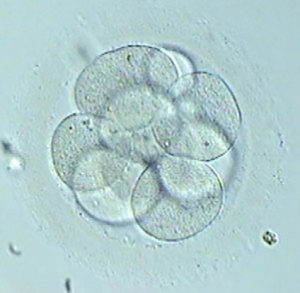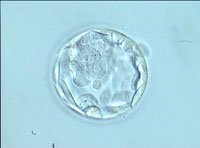
What became of my embryos? Haven’t I got embryos to freeze?
These are just some of the questions that couples might ask at an important time during their treatment, just before embryo transfer.
In all cases of fertility treatment involving the in vitro fertilisation (IVF) laboratory, it is essential that all couples are given extensive, detailed and personalised information. This means talking about the embryo fertilisation and development processes.
When only a few fertilised oocytes are available as a result of poor ovarian reserve, transfer is carried out on day 2 or 3 of development in around 60% of cases because at this stage we can clearly select the embryos that are suitable for transfer. In around half of these cases it is not possible to cryopreserve embryos for future attempts.
On other uncommon occasions, we do sometimes have an appropriate number of fertilised oocytes but some of them may undergo arrest and/or fragment and, following cultivation and up to blastocyst stage, we may not have embryos of a good enough quality for cryopreservation.
The reason why embryo arrest and/or fragmentation takes place is currently a matter of debate in forums and within the scientific community. It would appear that it is a multifaceted, highly complex problem on which genetic and molecular factors in the oocytes and the sperm have an impact, as well as the factors associated with embryo in vitro cultivation itself. It should always be kept in mind that, whilst the nutrients and cultivation conditions used during in vitro are tested, they can never improve upon the conditions in the maternal oviduct and uterus themselves.
It is also important to understand that, even if transfer takes place on day 2 or 3 of development, if the embryos that are transferred are of good quality (types A and B), the chances of pregnancy are high. Of course, the couple’s clinical background and in particular the mother’s age are key when giving a pregnancy prognosis. There is also the possibility of all embryos undergoing arrest and/or fragmentation. Even though the chances of this happening are under 1%, all couples need be made aware of this possibility before embarking on IVF treatment.
At Instituto Bernabeu, around 90% of patients who go through embryo transfer using oocytes from a donor also have high quality embryos for freezing using vitrification. In terms of patients undergoing IVF treatment using their own oocytes, the probability of having embryos to freeze is around 60%. The chances increase up to 70% in these cases if the woman is under 35 years of age.
Dr Jorge Ten, Director of Reproductive Biology at Instituto Bernabeu.
